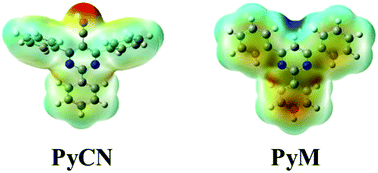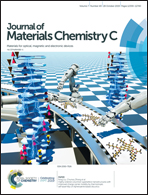Electrostatic potential dispersing pyrimidine-5-carbonitrile acceptor for high efficiency and long lifetime thermally activated delayed fluorescence organic light-emitting diodes†
Abstract
Pyrimidine-5-carbonitrile was developed as an electrostatic potential managing and strong acceptor moiety of thermally activated delayed fluorescence (TADF) emitters for high efficiency and long lifetime in devices. Two types of TADF emitters with the donor moiety extended from either the 2 or 4 position of the acceptor moiety were prepared to study the effect of the donor substitution position on the TADF characteristics of the TADF emitters. Comparison of the two types of TADF emitters suggested that the extension of the donor structure from the 4 position of the pyrimidine-5-carbonitrile acceptor is an effective way of enhancing the external quantum efficiency (EQE) and lifetime of the TADF devices. A high EQE of 19.8% and lifetime exceeding that of the state-of-the-art green TADF emitter were demonstrated using one of the pyrimidine-5-carbonitrile derived emitters through the uniformly distributed electrostatic potential.



 Please wait while we load your content...
Please wait while we load your content...